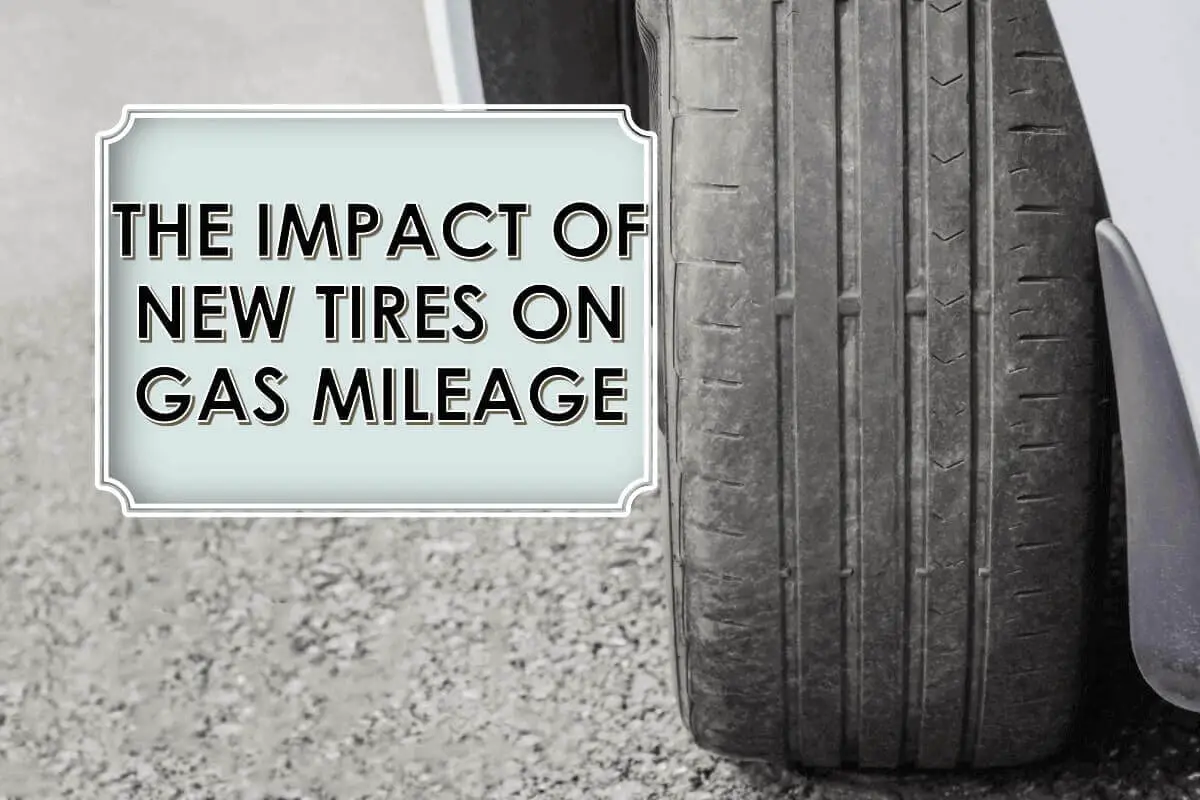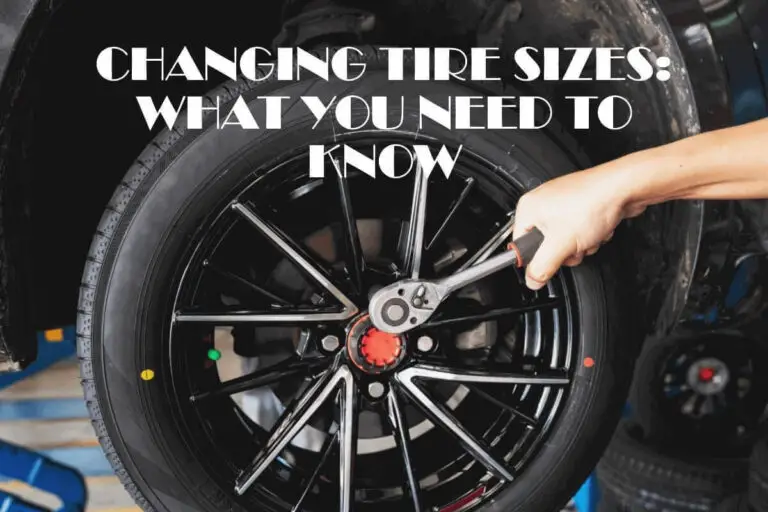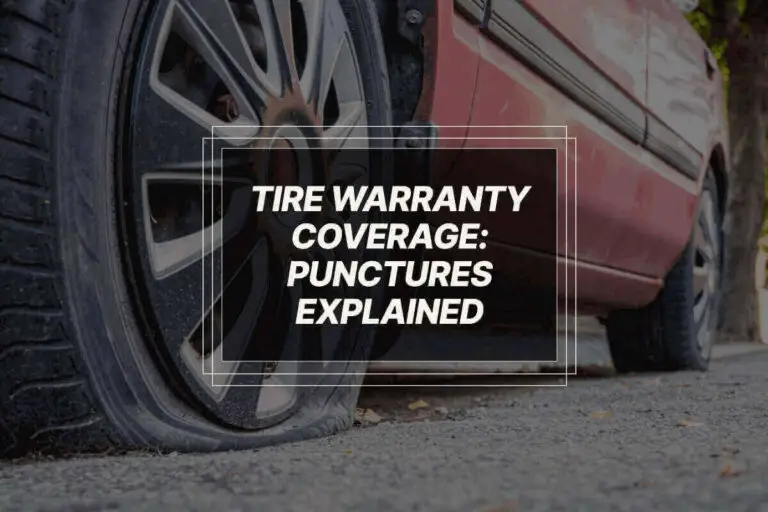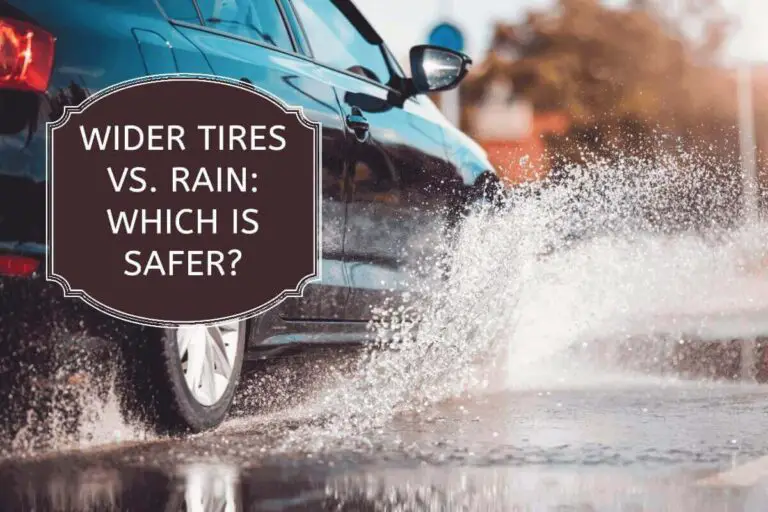As a car owner, you’ve probably noticed that the gas mileage of your vehicle isn’t always consistent. Have you ever wondered why does gas mileage drops with new tires? Why did your fuel efficiency drop after installing new tires? This beginner’s guide will shed light on this common phenomenon and explain the step-by-step process behind it.
We’ll cover the role of rolling resistance, the impact of tire break-in periods, the importance of tire inflation, and much more. By the end of this guide, you’ll have a comprehensive understanding of why new tires can affect your gas mileage and how to minimize their impact.
The Link Between Tires and Gas Mileage
Before we delve into the reasons behind the drop in gas mileage with new tires, let’s establish the connection between these two seemingly unrelated elements. Tires serve as the sole point of contact between your vehicle and the road. Their quality, size, tread pattern, and inflation pressure collectively influence your car’s performance, handling, and, most importantly, fuel efficiency.
Why Does Gas Mileage Drop with New Tires?
If you’ve recently installed new tires on your vehicle and noticed a decrease in gas mileage, you’re not alone. This common occurrence often leaves car owners puzzled. Let’s find out the answer to why gas mileage drops with new tires. Here are some factors you should know:
Unravelling Rolling Resistance
1. Understanding Rolling Resistance
Rolling resistance is a key player in the gas mileage equation. This term refers to the force required to keep your tires rolling as your car moves forward. Interestingly, new tires generate more rolling resistance compared to worn-out ones.
The automotive industry estimates that a 10% increase in tire rolling resistance leads to a 1% to 2% reduction in vehicle fuel efficiency. As such, drivers should anticipate a 2% to 4% drop in miles per gallon (mpg) after installing new tires.
2. Factors Influencing Rolling Resistance
Why do new tires have higher rolling resistance? The answer lies in their tread depth. New tires often feature deeper treads for improved traction and safety. However, these deeper treads mean that more of the tire comes in contact with the road, generating additional rolling resistance. This increased resistance demands more energy from your vehicle’s engine, ultimately resulting in decreased gas mileage.
Tire Break-In Period
1. Unveiling the Tire Break-In Period
Just like breaking in a new pair of shoes, tires require a break-in period to perform optimally. During the initial few hundred miles of driving on new tires, they undergo subtle changes. The tread settles, and the tire adapts to the road surface. This break-in process can impact your gas mileage.
2. Break-In Period and Fuel Efficiency
It’s worth noting that the reduction in gas mileage with new tires is not always a long-term issue. As the tread wears down slightly and the tire settles into its optimal shape, rolling resistance tends to decrease. Consequently, after the break-in period, you may notice a slight improvement in fuel efficiency.
Tire Inflation Pressure Matters
1. Significance of Proper Tire Inflation
Maintaining the correct tire inflation pressure is vital for your vehicle’s overall performance and fuel efficiency. Underinflated tires increase rolling resistance as more of the tire’s surface area touches the road. Conversely, overinflated tires can compromise traction and create a harsher ride.
2. Impact on Gas Mileage
Installing new tires requires attention to their inflation pressure. If the pressure is not aligned with the manufacturer’s recommendations, it can contribute to decreased gas mileage. Ensuring your new tires are properly inflated will help mitigate the impact on your fuel efficiency.
Tire Type and Composition
1. Diverse Tire Options
The tire market offers various options, such as all-season, summer, and performance tires. These tires vary in tread patterns, rubber compounds, and intended usage. Some prioritize grip and performance, while others focus on longevity and comfort.
2. Affecting Fuel Efficiency
Performance-oriented tires, designed for optimal grip, tend to have higher rolling resistance due to their stickier rubber compounds and unique tread designs. Conversely, all-season or eco-friendly tires are engineered to reduce rolling resistance and enhance fuel efficiency. When selecting new tires, consider your driving needs to strike the right balance between performance and gas mileage.
Additional Factors to Consider
1. Importance of Vehicle Alignment and Suspension
Proper vehicle alignment and suspension play crucial roles in tire wear and fuel efficiency. Misaligned wheels and worn suspension components can cause uneven tire wear, leading to increased rolling resistance and decreased gas mileage. Regular alignment and suspension maintenance can help preserve optimal fuel efficiency.
2. Driving Habits and Conditions
Your driving habits and conditions also influence gas mileage. Aggressive driving, frequent braking, and hilly terrain can all lead to decreased fuel efficiency, irrespective of your tire choice. Practicing smooth driving habits and maintaining a consistent speed can counterbalance the impact of new tires on gas mileage.
Conclusion
Understanding the details of the relationship between new tires and gas mileage empowers you as a responsible car owner. The initial drop in gas mileage when installing new tires can largely be attributed to increased rolling resistance caused by their deeper treads. However, this phenomenon is not necessarily permanent. As the tires break in and the rolling resistance diminishes, your fuel efficiency should gradually improve.
By paying attention to tire inflation, considering tire types, and being mindful of other driving-related factors, you can navigate this situation and ensure your vehicle performs optimally in terms of both fuel efficiency and handling.
Frequently Asked Questions (FAQs)
What causes gas mileage to decrease?
Gas mileage can decrease due to factors like higher tire rolling resistance from new tires, aggressive driving habits such as rapid acceleration and frequent braking, poor vehicle maintenance like dirty air filters and worn-out spark plugs, challenging driving conditions such as heavy traffic and hilly terrain, and carrying excess weight in the vehicle.
How much difference do Tyres make to fuel economy?
The impact of tires on fuel economy is quite significant. In fact, tires contribute to approximately 20% of a car’s total fuel consumption. This means that making a wise choice when it comes to selecting your tires can result in substantial savings. The potential for saving money is particularly evident for those who cover longer distances.
At what mileage should you get new tires?
When considering when to replace your tires, a general guideline is to do so around the 50,000 to 60,000 mile mark, on average. However, this figure varies based on the tire manufacturer. Different manufacturers design their tires with varying longevity in mind. Some create tires that can endure up to 80,000 miles of usage, showcasing impressive durability.
Will alignment help gas mileage?
Yes, getting a wheel alignment can indeed improve gas mileage. Misaligned tires can reduce fuel efficiency by up to 10%. When tires are misaligned, they don’t roll freely and instead create a dragging effect. This means that if your tires are not properly aligned, you may end up using more fuel than necessary. By getting a wheel alignment, you can help conserve fuel and reduce the frequency of refueling.
How can I improve my gas mileage?
To enhance your gas mileage, it’s advisable to adhere to the speed limit and utilize cruise control whenever feasible. Avoid rapid acceleration and harsh braking, as these actions consume fuel rapidly. Additionally, maintaining proper tire inflation is crucial. When your tires are underinflated, your fuel consumption could rise by up to 3%. These practices can collectively contribute to improved fuel efficiency.







